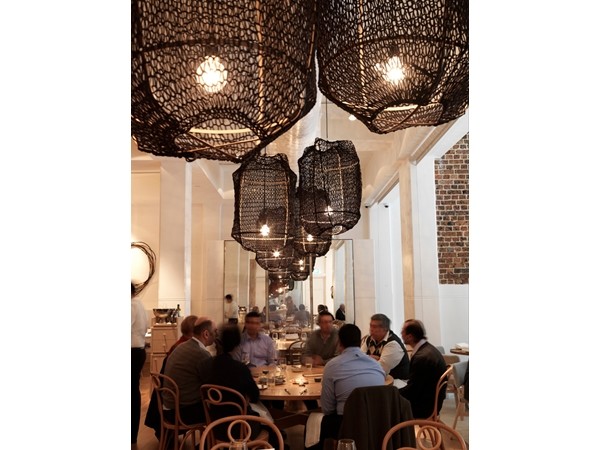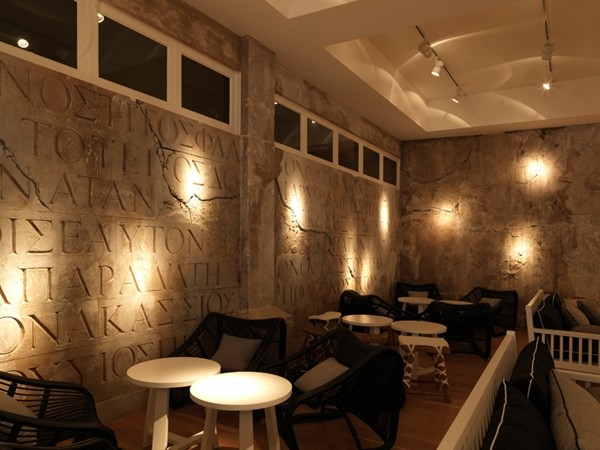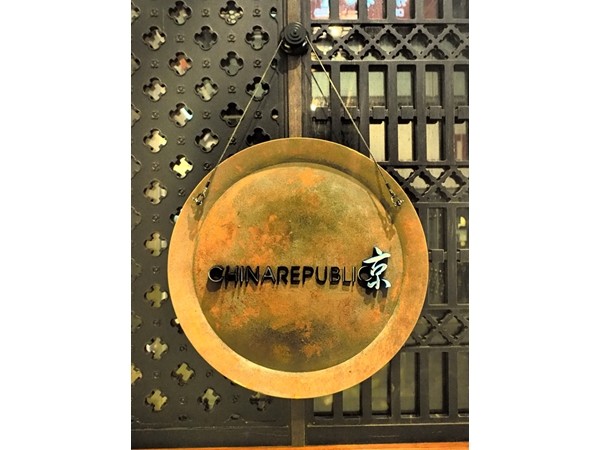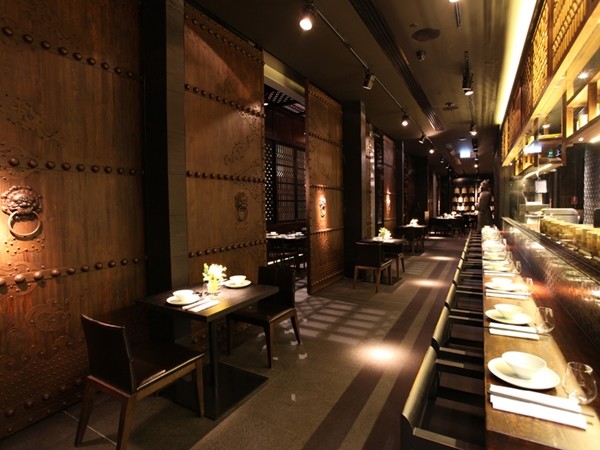DS17 is a new breed of creative agency that strives to be continually fresh; a practice that does not stick to labels and isn’t afraid to distance itself from traditional design principles.
Established in 1994, DS17 is driven by this mantra. It was founded by director Paul Papadopoulos only two years after he graduated from the KVB Institute of Design, during which he worked as a design contractor. Today, the practice has completed around 150 projects around the world, and specialises in hospitality and retail.
Architecture & Design speaks to Paul about his design process and why DS17 likes to deliver a whole design package, from name and logo to the fitout of their projects,
Why interior design?
I wanted to do something in the design industry after high school, but architecture was a little too boring for me. I wanted to do something different every day, and the collaboration of design, from hospitality to commercial and residential – a whole facet of things – was appealing.
I initially worked for a couple of years in a contract position when I first graduated, but I knew I wanted to be on my own. I bit the bullet as they say, and hired a small 40sqm space, went to Ikea and bought my first desk and lamp – and the rest is history. This eventually graduated into more staff, better clients, and ultimately better experiences.

Alpha Restaurant by DS17
You started DS17 in 1994. What has changed for you and the practice over the years?
When I first started, it was the passion for design that really drove me to keep striving to do the best. It was also about recognition, be it through the industry or media, and creating spaces that make people feel good in the space we made. Since then, our experiences have taught us to be street-savvy, and to understand what needs to be done, and what doesn’t.
What’s really changed over the period is the amount of paperwork, logistics and consultancy we’ve gathered! Of course, this is part and parcel of the job and each project. Also, when I first started I had to draw by hand, so computer-generated design and even emails were a big transformation. But the challenges we face are no different to before, and my passion for design remains.
What inspires you?
Inspiration comes from a lot of different aspects and is not specific. I am inspired by travel, nature, seeing site conditions and site analyses, fashion, jewellery, as well as products and product design. Tranquillity inspires me too, if it makes sense, as that’s when you become more creative.
Some of the architects whose work I’ve admired in the past include Tadao Ando, a Japanese architect who ‘revolutionised’ the raw concrete, minimal, quite simplistic look, and on the flip side, the new-age Zaha Hadid, who just creates the most curvaceous, beautiful, fluid, clean and crisp designs.

Do you have to actively seek inspiration?
In our office, it’s always about what’s new and fresh and different. This could be a tile, a piece of jewellery, a finish, or a dish or even a menu. Inspiration is, and comes from everywhere.
What is your design process like?
We first meet with a client to get an understanding of who they are, where they’re from, and what they want. Our designs are driven by brief and a budget, so those are key questions we ask right at the beginning. Some clients have a misconception of what is required of them in terms of cost, but if we can formulate the same expectations, then we can move forward.
Ultimately, we look at the site of course – site conditions, where the focal points are, how big the space is, if it is in a shopping centre or on the water, who the neighbours are, and a variety of other aspects before we put pen to paper. It is almost like a questionnaire, and as we are talking (and subconsciously designing!) we are ticking the boxes to help us create a clearer brief.

Alpha
After we have been commissioned and have received a brief, we put together a concept presentation which looks at the big picture – the feel, inspiration, colour, light, texture, furnishings, and even the type food or products that would be served in the project.
We then focus on the fusion of branding and graphics, which brings everything together, before creating 3D imageries, colours and renditions. Finally, we move on to the documentation and the technical aspects.
It is interesting that DS17 does the branding for projects as well, such as in China Republic – why?
We call this process the perfect puzzle. Designing a space like a restaurant is a combination of different things, including working with chefs to understand not just the food they cook, but also how they cook and present it. Lighting is important, as is the selection of music. Branding is part of this package, and oftentimes drives the details of a space.

With China Republic, the clients wanted a modern Chinese restaurant, but didn’t have a name or concept for it. Therefore we decided to come up with something that would represent what they wanted: strength, structure, solidity and masculinity; traits that are associated with the Forbidden City in China. The name of the restaurant came about the same way the design did – in line with these elements. We wanted something that was dynamic, and played a part in the way the logo should look, how it should be represented, and the colours for it.

The corporate identity of a project is not always done by us, but we find that it’s more effective if we have control of it instead of having to try and brief somebody else about it. This also means we know the concept better than anyone else, which makes putting the puzzle together easier.
You’ve worked on projects around the world. Is there a city you like designing in?
They are all different in their own way, but home is home, and we get to appreciate our designs more in Australia. At the same time, Dubai is a fascinating city where when there is a will, there is a way. It’s on the map as one of the major destinations everyone needs to visit, so it is inspiring to do work there.
What’s the difference between Australia and places like Dubai and New York?
Australians and Australian designers adapt to all levels to suit a brief and not necessarily a theme. In a lot of countries, designers tend to follow a theme, but I think that becomes quite kitsch and dates very quickly.

